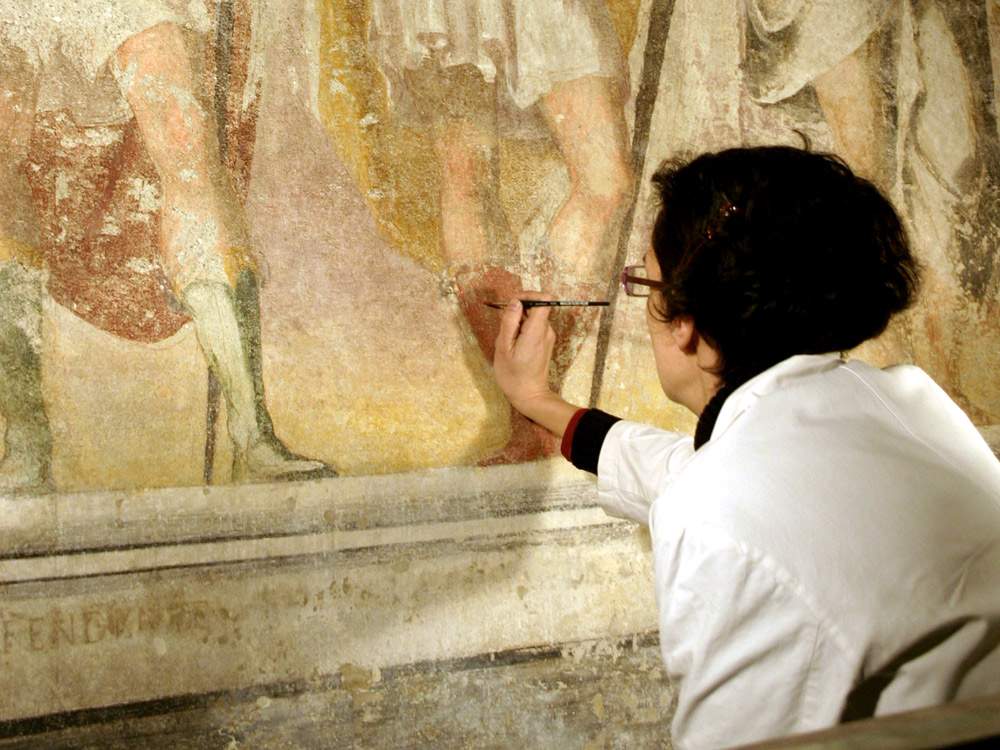The effects of the Covid-19 coronavirus pandemic on cultural workers are devastating. The association Do you recognize me? I am a cultural heritage professional conducted a survey between March 13 and April 3, 2020, covering 1,889 workers, and released the results yesterday. Meanwhile, the composition of the sample: 38 percent work in cultural tourism, 30 percent in cultural heritage, 12 percent in both of the two sectors just mentioned, 17 percent in entertainment and creative production, and the remaining 3 percent work in two or more of the sectors mentioned above. As for contracts, we have 38 percent of VAT numbers, 16 percent of precarious workers who work on a casual or withholding tax basis, 14 percent fixed-term, 12 percent permanent, 7 percent on call, 4 percent on contract, while the remaining 3 percent have other types of contracts (internship, apprenticeship, temporary, etc.).
The most striking figure is the number of workers who have already suffered consequences: they are 79%, compared to 18% who fear they will suffer them soon and only 3% who, on the other hand, have not suffered any job or income consequences, nor fear they will follow in beve. As many as 56% speak of having suffered work stoppage, or zero or plummeting income. 61% of workers believe they have lost at least 800 euros, but almost half of the respondents say the loss corresponds to 100% of expected income during the period of the restrictive measures, while for 20% the lost earnings correspond to 50% of expected income. Dramatic data also on the sustainability of this lockdown: as many as 51% believe they can hold out without a turnaround or without economic aid for at most two months (16% three months, 13% six months, 5% one year, while 12% say they have other income or can be helped). Eighty percent, in essence, do not see a prospect beyond six months.
As for workers still on the job (the survey covers those who have continued to work after the decrees of 9 and 11 percent), only 47.20 percent say they can always work at least two meters away from their colleagues and are able to follow all the regulations specified by the Ministry of Health. This is mostly possible for 15.03% of workers, minimally for 10.14%, while there is a worrying 27.62% who did not work in safe conditions.
As for future prospects, 1,027 workers fear the contraction of the entire industry in the medium to long term, in 952 fear the decline in contracting, and 531 fear the reduction of the workforce. Then there are those who think there will be downward revisions of wages and compensation (480), collapse of public investment (396), collapse of private investment (303), and downward revision of workplace rights and protections (247). As for the government’s measures to address the labor and social emergency in the cultural sector, 78 percent do not consider them sufficient, as opposed to 22 percent who approve of what the Conte government has done. The most requested measure is the extension of lay-offs and other social safety nets to a wider audience, for example to workers with short contracts or self-employed (789), stronger and more binding contracts to protect workers in the sector (751), tax relief to cultural enterprises (738), government investment to help foundations and enterprises out of the crisis (660), extension of citizenship income to those who cannot work because of the decrees (635), incentives to encourage hiring (573), increased public and state hiring (465), incentives and constraints to maintain employment levels at pre-emergency (443), state investment to offer remote jobs to those who have lost them (228), limits on contract and monti ore reviews (94).
“In the face of such a picture, which to call disastrous and dramatic is an understatement,” reads the conclusion of the report published by Mi Riconosci, “any measure that aims to buffer the problems in the immediate term, without addressing the structural causes of this situation, seems largely inadequate. Linchiesta clearly reveals that while a minority of workers are already in a state of absolute destitution, the very large majority will be in the same situation within the next six months. The most dramatic situation by far is in the cultural tourism sector, but the entire cultural sector, from libraries to theaters, is experiencing an already structural crisis that will in no way be resolved as the health emergency ends or slows down. The needs expressed by those who work are first and foremost to lay the groundwork to ensure that nothing like this ever happens again, extending social safety nets to the self-employed and more precarious workers, and establishing more stable and protected contracts. This does not exclude business support, which is in fact desired by many of those interviewed, but which must be contextualized within a framework of profound reform of the system that regulates work in the sector.”
Photo: Restorer at work in the basilica of SantEustorgio in Milan. Ph. Credit Giovanni DallOrto
 |
| Devastating effects of coronavirus on cultural workers: 8 in 10 already affected, 3 in 10 not working safely |
Warning: the translation into English of the original Italian article was created using automatic tools. We undertake to review all articles, but we do not guarantee the total absence of inaccuracies in the translation due to the program. You can find the original by clicking on the ITA button. If you find any mistake,please contact us.